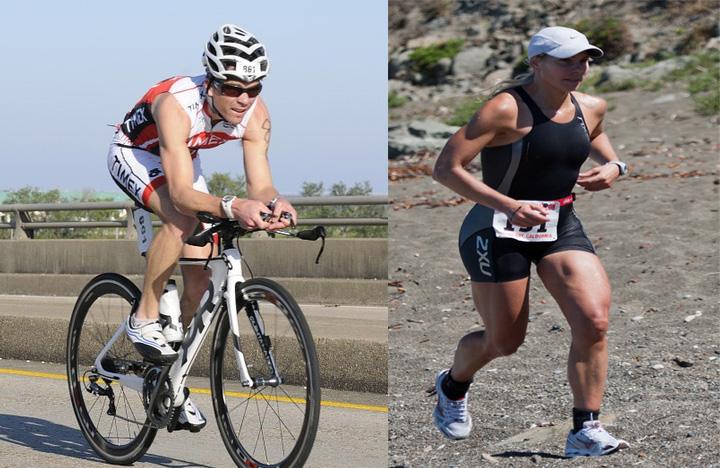Most triathletes have a love-hate relationship with their brick workout. But they know it’s the chance to get in the best shape of their life! The typical “brick” workout for triathletes consists of a bike ride then a run, and it should be undoubtedly a standard workout for most triathletes in the weeks and months before any race.
A brick workout refers to the stacking of any two disciplines during the same workout, one after the other with little to no interruption in between. This means any athlete can accomplish a brick workout, not just triathletes. As the athlete switch modes of exercise, the body needs to effectively and efficiently prepare for the next part while recovering from the previous part. The heart rate increases significantly as the body tries to shift the blood flow from the muscles of the first exercise to the muscles of the next. As a general rule, it can take between 10-20 minutes to get your “running” legs back after biking. Once you do these a few times, you can condition your muscles and your brain to become very efficient at changing from bike to run.
Why do triathletes love them so much? Brick workouts provide some of the best returns on investment for triathletes. They’re sessions that offer endurance and strength all in one intense and slightly gratifying package. Brick workouts help the body handle the aerobic, anaerobic, and muscular demands of a triathlon event.
However, on the flipside, brick workouts are taxing and require a huge time commitment and recovery time. Two things that are not easy for triathletes.
But why are they called “brick” workouts? Here are some answers floating around on the internet:
- You stack one work out right on top of another, like laying bricks.
- They are hard as bricks.
- That is what your legs feel like when you run after you bike.
- The funniest:
- B = Bike
- R = Run
- ICK
No matter why they are called “brick” workouts, the truth is they work. They make you stronger, leaner and faster and they should be included in every triathlete’s training plan.
For those of you who are new to brick workouts, here are 5 tips to get you started:
- Follow your ride with a run that is about 10% of your total bike time. So if you bike 60 minutes, start with a 6-10 minute run.
- For your first two bricks, stick with 10%, but as you get stronger and your muscles become more efficient, you can work your way up to about 20% of your total time. This will vary based on your ability level as a cyclist and as a runner.
- Have a partner ready to pick up your bike on your brick days so you can practice a quick transition. Do your long bike ride and have a place to drop your bike with your partner off before jetting off on your run. You can also lock your bike to some sort of rack or tree before your run. Another option is to put your bike back in your car and head off to your run.
- Can’t do an outdoor brick because of bad weather? Logging miles on a bike at the gym and running on the treadmill counts – and still offers the same benefits as doing the brick outdoors.
Lastly, be sure to never plan on scheduling a brick workout too close to a planned race as they can be pretty tough on the body. How often can you do brick workouts? You should consider your experience level, your body’s response, and how susceptible you are to injury, but you can complete a brick workout about once every other week as you prepare for your race.
If you would like help training for your next triathlon, or to learn more about brick workouts, contact me today! I’ll help you get on your way!







